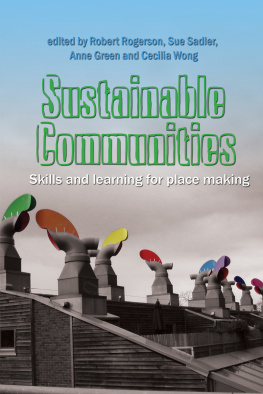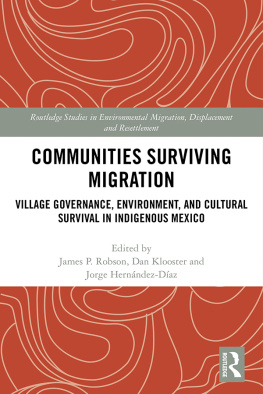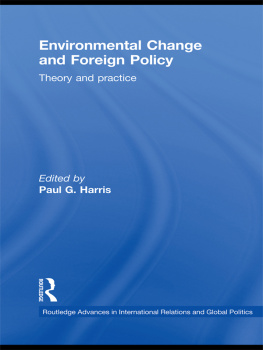Conflict and Sustainability in a Changing Environment
Anthem Ecosystem Services and Restoration Series
The Anthem Ecosystem Services and Restoration Series presents lessons for practical decision making by governments, businesses and NGOs seeking to incorporate the language and logic of ecosystem services into their activities. Ecosystems provide valuable services to individuals, organizations and society more generally, but the practical application of this principle is not at all straightforward. Policymakers, businesses and advocacy organizations around the world are developing innovative ways of incorporating ecosystem services into decision making through the creation of markets, trusts and policies of various kinds. This series seeks to develop a better understanding of the strengths and weaknesses of these initiatives and to generate a more informed understanding of which interventions result in the most effective and sustainable outcomes.
Series Editor
Lawrence SusskindMassachusetts Institute of Technology, USA
Editorial Board
Marina AlbertiUniversity of Washington, USA
Jayanta BandyopadhyayIndependent policy researcher in environment and development, India
Robert CostanzaAustralian National University, Australia
Marta EchavarraEcodecision, Ecuador
Pushpam KumarUNEP and University of Liverpool, UK
Matthias RuthNortheastern University, USA
Anne SpirnMassachusetts Institute of Technology, USA
Conflict and Sustainability in a Changing Environment
Through the Eyes of Communities
Gwendolyn Smith
and
Elena P. Bastidas
Anthem Press
An imprint of Wimbledon Publishing Company
www.anthempress.com
This edition first published in UK and USA 2017
by ANTHEM PRESS
7576 Blackfriars Road, London SE1 8HA, UK
or PO Box 9779, London SW19 7ZG, UK
and
244 Madison Ave #116, New York, NY 10016, USA
Gwendolyn Smith and Elena P. Bastidas 2017
The moral right of the authors has been asserted.
All rights reserved. Without limiting the rights under copyright reserved above, no part of this publication may be reproduced, stored or introduced into a retrieval system, or transmitted, in any form or by any means (electronic, mechanical, photocopying, recording or otherwise), without the prior written permission of both the copyright owner and the above publisher of this book.
British Library Cataloguing-in-Publication Data
A catalogue record for this book is available from the British Library.
Library of Congress Cataloging-in-Publication Data
A catalog record for this book has been requested.
ISBN-13: 978-1-78308-607-8 (Hbk)
ISBN-10: 1-78308-607-6 (Hbk)
This title is also available as an e-book.
CONTENTS
The green blanket of rain forest seemed never ending until our small, five-person airplane landed in the middle of nowhere, a place full of stilted wooden huts, covered with thatch leaves, playfully situated. The place was called Kwamalasamutu, an indigenous village named after the many bamboo bushes and sandy heaps near an elegantly flowing river. It was my first time so deep in the Amazon rain forest. My mission was to prepare medicines from forest plants together with the nature-dependent group of indigenous peoples called the Trio. After learning a few words of the local language, discussions about my sustainable development project startedwith goals, activities, outcomes and indicators. When I explained that they had to collect plants from the forest and cook them into a bottled end product, the Trios were sitting around me, listening attentively and nodding their heads without saying too much.
Trading bottles of herbal medicine to markets outside the village suggested that the Trios could enjoy a steady income, which would also provide precious jobs for the next generation of Trios. A few weeks after my initial explanation about the project, I noticed the Trios hesitating to collect any medicinal plants. I tried to explain the goal and activities once more in my attempt to be clearer than before in my communication with them. Untiringly I kept explaining without receiving a positive response, until I realized there was a discrepancy between my view of sustainability and that of the Trios. And then it struck me: what was I going to teach these people about sustainability in their own journey? The truth was that I could only learn from them.
The Trios have been living in the Amazonian rain forest for an estimated period of 4,900 years. Generations of Trios have been known for their ingenuity in adaptation to and caretaking of their surrounding environment. Resource strategies have always been developed out of past experiences. Failure dictates which strategies these indigenous peoples will choose going forward. Their most important goal is to transfer the useful knowledge to future generations so they can nourish and sustain the forest that supplies their livelihood. Only trading herbal medicines does not fit within this Trio goal.
My quest to understand how indigenous peoples think about sustainability had started. During my observations and interactions with indigenous groups I have seen that the complexity of the view comes alive when an indigenous community experiences an incompatibility with its surroundings. The community seems to exist in a conflict. The conflict with small-scale gold miners, animal traders or other (illegal) groups that are likely to compete with indigenous peoples for resources is well known. The conflict caused by uncertainty in services generated by the environment, for example, when indigenous groups experience food scarcity because of climate change, is less obvious. Community members become tense and are clueless about what to decide for the future because they have never encountered environmental phenomena before. In this state of panic, communities are more likely to show and say what they really think or want. Soon they convey their underlying interest, their real view. Understanding how they deal with conflict is, thus, a necessary part of understanding the communitys view for a sustainable future in a changing environment.
This book builds on theories of conflict resolution to lay the groundwork for a different understanding of the communitys view. With this new approach I seek to gain insight into their decision making and how they delicately craft a path toward development while experiencing climate change. The information in this book is the result of more than twenty years of experience of working closely with several indigenous tribes in South America. The mutual trust and respect gained over the years offered an uncommon and unique insight for a Western-trained researcher like me. My understanding of the view of organizations that initiate development was obtained from leading a not-for-profit organization since 2004. Operating within this realm taught me valuable lessons on how communities are viewed as partners in development. It is from this experience that many of my comments and reflections are being shared in this book. Numerous ideas were complemented by my coauthor, Elena Bastidas, who relies on more than a decade of experience partnering with Afro-Colombian communities in their journey toward sustainable development. Elena has shared her valuable insights on research practice in the chapter titled Social Polygraphy: An Approach to Obtaining Information through Mutual Learning in this book.








